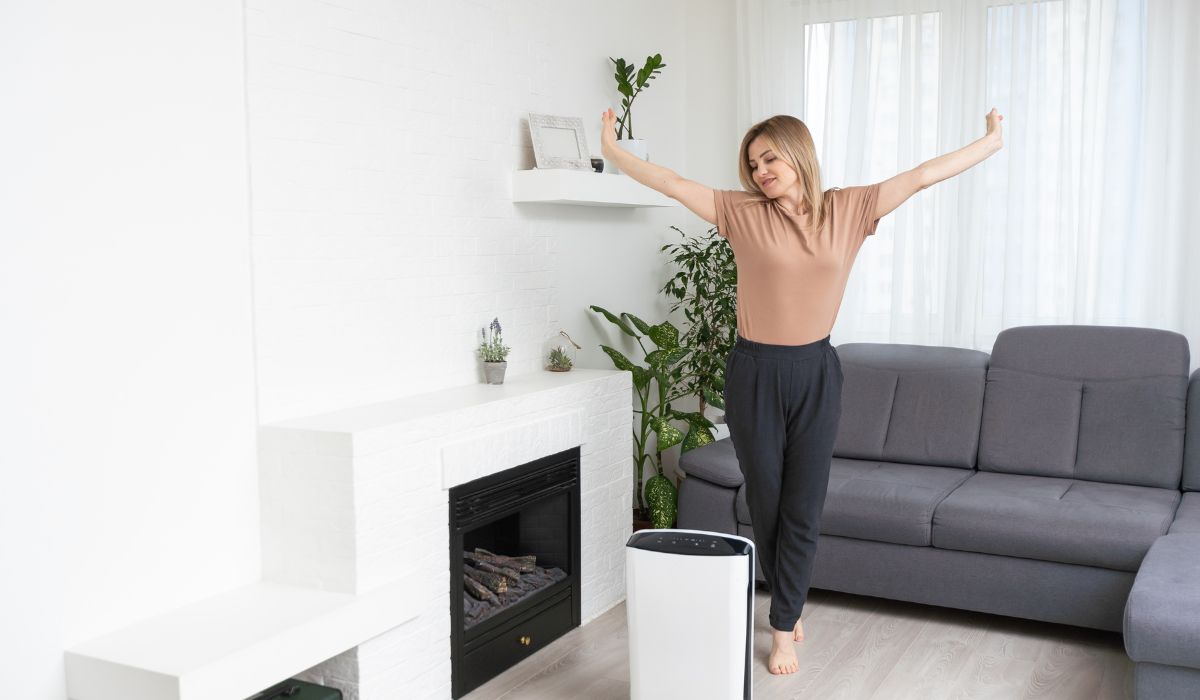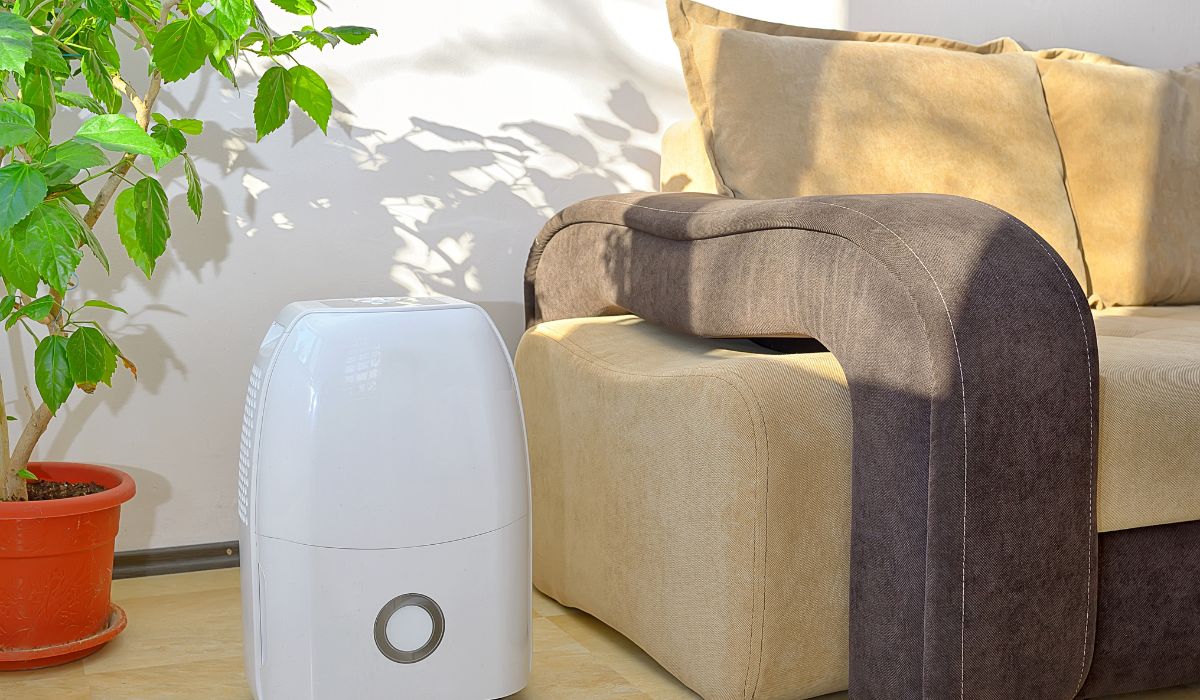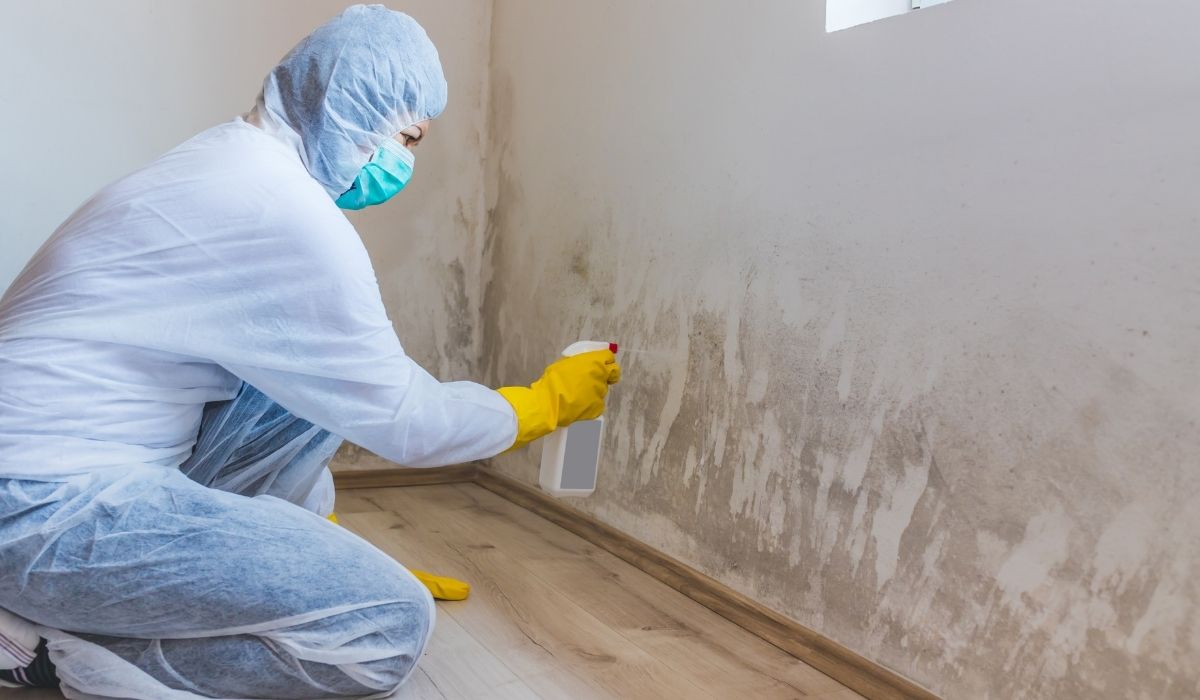Can a Dehumidifier Stop Water Damage in Moisture Areas?
Moisture is one of the biggest hidden dangers in a home. High humidity, condensation, and water vapor can sneak into basements, crawl spaces, bathrooms, or even behind drywall. Over time, this extra moisture can lead to leaks, mildew, mold growth, and serious water damage.
But here’s the question many homeowners ask: can a dehumidifier help stop water damage in high moisture areas? The short answer is yes—when used the right way, a dehumidifier is a powerful tool for keeping your home dry, safe, and healthy.
Let’s explore how dehumidifiers work, when to use them, and how they can prevent water damage in your home.

What is a Dehumidifier?
A dehumidifier is a smart device that reduces the amount of water vapor in the air. It pulls in moist air, cools it so condensation forms, then collects the water in a tank or pushes it out through a pump and drainage system. After that, it blows drier air back into the space.
This cycle helps lower humidity, improve indoor air quality, and reduce the risk of water damage or mold growth.
Why Moisture is a Problem for Homes
Moisture isn’t just uncomfortable—it’s damaging. Here’s why too much water vapor in your home is risky:
- Mold growth – Mold and mildew thrive in damp conditions, growing on wood, carpet, drywall, and duct surfaces.
- Odor – Stale, musty smells spread when moisture lingers in basements or crawl spaces.
- Damage to materials – Water content can weaken wood, cause drywall to sag, and ruin carpet or flooring.
- Plumbing and roof leaks – High humidity makes existing leaks worse, and water can seep deeper into walls and ceilings.
- Health risks – Poor air quality from mold spores and mildew can trigger asthma, allergies, and other breathing issues.
This is why tools like dehumidifiers, ventilation fans, and even silica gel packs are so important.
How a Dehumidifier Prevents Water Damage
So, can a dehumidifier help stop water damage in high moisture areas? Absolutely. Here’s how:
Reduces Condensation
Condensation often appears on windows, ducts, and cold surfaces. If ignored, it drips into walls and causes hidden leaks. A dehumidifier lowers humidity so condensation doesn’t form as easily.
Improves Airflow
By pulling in moist air and circulating dry air, a dehumidifier improves airflow. This keeps basements, crawl spaces, and bathrooms from feeling damp and sticky.
Protects Building Materials
Wood floors, drywall, and carpet can all warp or rot when exposed to moisture. A dehumidifier keeps the water content of these materials at a safe level.
Supports Mold Removal and Remediation
If you’ve already had water damage cleanup or mold remediation, running a dehumidifier helps keep the area dry so growth doesn’t return.
Prevents Musty Odors
Musty odors are a sign of mildew and hidden water damage. A dehumidifier reduces the odor by lowering humidity and stopping growth.

Best Places to Use a Dehumidifier
Some spaces in your home are more at risk for high humidity. Here’s where a dehumidifier makes the biggest difference:
Basements
Basements often trap humidity from poor ventilation and ground water. Running a dehumidifier helps prevent water damage and mold growth on carpet, wood, and drywall.
Crawl Spaces
Crawl spaces collect water vapor from the soil. With limited airflow, these areas are prime spots for mildew and leaks. A dehumidifier plus proper drainage is a strong defense.
Bathrooms
Bathrooms build up steam and condensation after showers. Without ventilation or a dehumidifier, mold can grow on tile grout, drywall, and ceilings.
Laundry Rooms
Washing machines and dryers create heat, humidity, and moisture. A dehumidifier lowers the water content in the air and protects flooring.
Attics and Roof Areas
If your roof leaks or ventilation is poor, an attic can hold excess moisture. A dehumidifier, along with fixing the roof and ducts, reduces water damage risk.
Signs You Need a Dehumidifier
Not sure if a dehumidifier will help? Look for these signs in your home:
- Water stains on drywall, ceilings, or floors
- Musty odor or mildew smell in rooms or closets
- Condensation on windows, ducts, or pipes
- Mold growth on walls, carpet, or furniture
- Wood that feels soft, damp, or swollen
- Increased allergy or asthma symptoms indoors
- High readings on a moisture meter
If you notice these, a dehumidifier may help prevent bigger water damage problems.
How to Choose the Right Dehumidifier
Not all dehumidifiers are the same. Here are tips for choosing one that fits your needs:
Size of the Space
Measure the square footage of the basement, crawl space, or room. Larger spaces need more powerful units.
Water Removal Options
Some units have tanks you empty by hand. Others use a pump and drainage hose for continuous removal.
Energy Efficiency
Look for Energy Star-rated models to save money on electricity.
Extra Features
Smart dehumidifiers may connect to your smartphone, letting you monitor humidity and water content from anywhere.
Using a Dehumidifier with Other Tools
A dehumidifier works best when combined with other tools and practices:
- Ventilation – Use fans in bathrooms and kitchens to improve airflow.
- Air movers – These speed up drying after water damage cleanup or leaks.
- Vacuum and cleaning – Regularly vacuum carpets to prevent mildew.
- Plumbing checks – Fix leaks from pipes, drains, sinks, or toilets quickly.
- Silica gel – Use in small spaces like closets to absorb moisture.
- Moisture meter – Monitor the water content in wood, drywall, and flooring.
Together, these tools help prevent water damage and keep your air quality safe.
When a Dehumidifier Isn’t Enough
While a dehumidifier can prevent water damage, sometimes bigger problems need professional help.
Water Damage Restoration
If you’ve had a major leak, flood, or storm, you’ll need professional water damage restoration. Experts use industrial pumps, air movers, and vacuums to remove water fast.
Mold Remediation
If mold growth spreads across walls, ceilings, or ducts, professional mold remediation and removal are needed. A dehumidifier can help afterward but can’t replace full cleanup.
Smoke Damage and Fire Damage
After a fire, water from firefighting efforts can mix with smoke damage. Restoration teams handle both issues.
Tips to Prevent Water Damage Before It Starts
Here are easy steps you can take at home to protect against moisture and water damage:
- Install a dehumidifier in basements, crawl spaces, and bathrooms.
- Check your roof for leaks or missing shingles.
- Use proper drainage around your home’s foundation.
- Keep gutters and downspouts clear.
- Run exhaust fans when cooking or showering.
- Place a water alarm near plumbing or washing machines.
- Use a pressure regulator on pipes to avoid bursts.
- Schedule regular plumbing inspections.
Why Indoor Air Quality Matters
A dehumidifier doesn’t just prevent water damage—it improves your overall health. High humidity lowers indoor air quality, making it harder to breathe. By keeping moisture balanced, you can:
- Reduce asthma and allergy symptoms
- Prevent mold spores from spreading
- Avoid that damp, heavy feeling in the air
- Keep your home smelling fresh and clean
The Role of Professionals in Moisture Control
While homeowners can use dehumidifiers, vacuums, and pumps, professional help is often needed when damage is severe.
Restoration experts use advanced tools like industrial air movers, moisture meters, and high-powered pumps. They also understand how to track hidden leaks in plumbing or inside walls.
By combining professional restoration with your own moisture control habits, you can protect your home long-term.
Final Thoughts
So, can a dehumidifier help stop water damage in high moisture areas? Yes, it can make a huge difference. A dehumidifier reduces humidity, stops condensation, protects materials, prevents mold growth, and improves air quality.
But remember—it’s just one tool. Pair it with good ventilation, drainage, and regular plumbing checks. And if water damage or mold growth has already spread, call a professional for full restoration.
A dry home is a safe home, and using a dehumidifier is one of the smartest ways to protect it.

FAQs
How does a dehumidifier prevent water damage?
It lowers humidity and condensation, keeping wood, drywall, and carpet from absorbing too much water content and becoming damaged.
Can a dehumidifier stop mold growth?
Yes, by reducing moisture, a dehumidifier makes it harder for mold and mildew to grow. But if mold is already present, you may need professional removal.
Do I need a dehumidifier in my basement?
Most basements benefit from a dehumidifier since they often have poor ventilation, high humidity, and risk of leaks.
Can a dehumidifier replace water damage restoration?
No. A dehumidifier can prevent water damage but cannot handle large leaks, floods, or serious mold growth. That requires professional restoration.
How do I know if my home needs a dehumidifier?
If you see condensation, smell musty odors, notice mold growth, or get high readings on a moisture meter, your home likely needs one. Contact us today or visit a store like Best Buy to get a humidifier.



